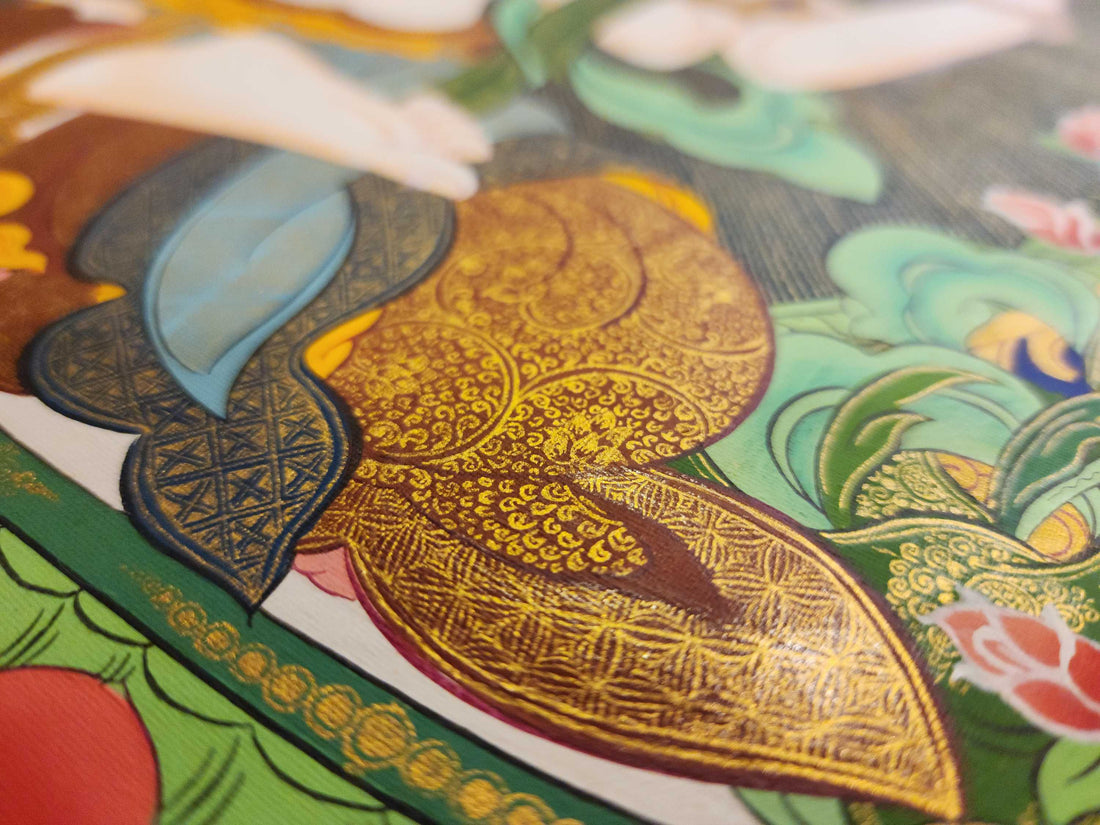
The Victory Banner: Symbol of Triumph in Thangka Art
Share
Introduction
Among Buddhism’s Eight Auspicious Symbols, the Victory Banner (Dhvaja) stands tall as a sign of spiritual triumph. In Thangka art, it represents the victory of wisdom over ignorance and the triumph of enlightenment over worldly obstacles.
Meaning of the Victory Banner
— Symbolizes the Buddha’s victory over the four māras (obstacles to enlightenment).
— Represents the power of Dharma to conquer negativity, ego, and suffering.
— Encourages practitioners to overcome internal challenges with faith and discipline.
Depiction in Thangka Art
— Usually illustrated as a tall flagpole topped with a small golden parasol or flaming jewel.
— Decorated with silk ribbons, lotus motifs, and victory streamers.
— Often placed at the top of temple roofs or around deities symbolizing divine triumph.
Spiritual Significance
— Reflects the ultimate victory of enlightenment. The realization of true wisdom.
— Reminds practitioners that success is not external but spiritual: the overcoming of ignorance.
— Inspires perseverance and courage on the spiritual path.
Use in Rituals and Culture
— Victory Banners are raised during important Buddhist festivals and ceremonies.
— Monasteries place them on rooftops to symbolize the triumph of good over evil.
— Believed to bring blessings of success, power, and positive energy.
Modern Relevance
Even today, the Victory Banner symbolizes success. Not in material form, but as inner achievement, peace, and clarity gained through mindfulness and compassion.
Conclusion
In Thangka art, the Victory Banner is more than a symbol. It’s a reminder that every act of compassion, patience, and awareness is a step toward spiritual victory.
